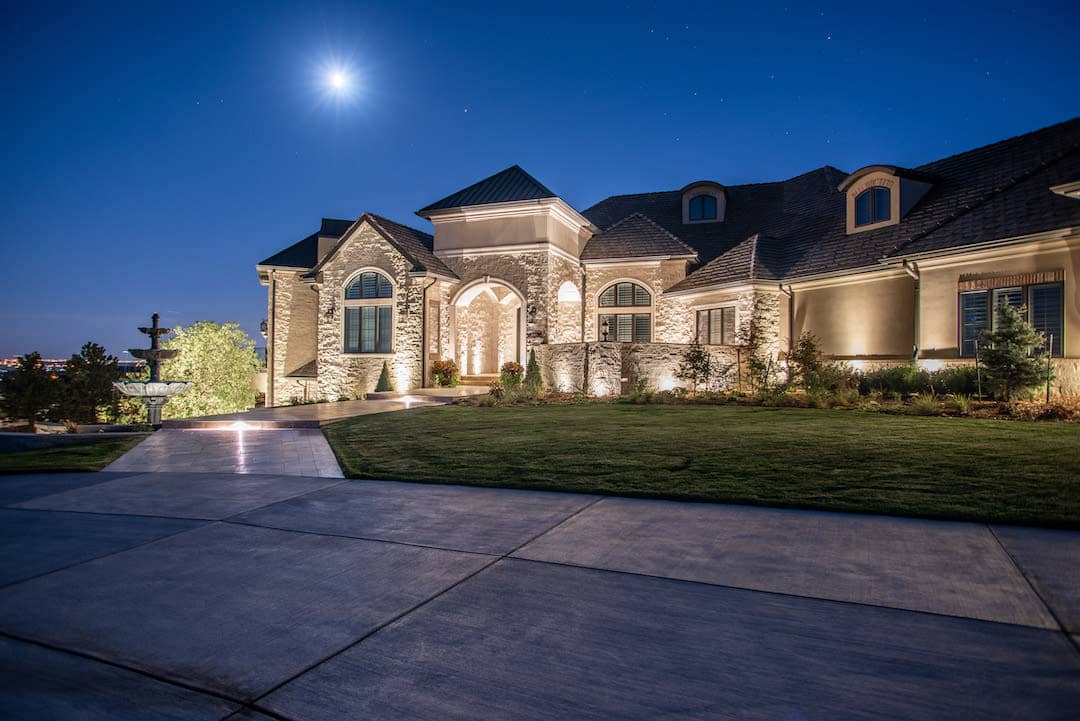
How to Design Landscape Lighting: Ideas and Tips
Landscape lighting, smart and wired, often not included in an original residential landscape plan, is a great way to enhance your property. Not only does outdoor landscape lighting increase your curb appeal but highlighting the unique features of the home’s architecture and shining light on distinct plantings can transform your landscape into a thing of beauty during the night.
Outdoor lighting is essential to making sure safety is the top priority. Extending the use of your outdoor entertaining and outdoor living areas into the evening hours can be dangerous unless you properly illuminate paths, walkways, cooking areas and stairs. If you want to enjoy the visual aspects of your space, having landscape lighting for your water features, pools, spas, and plantings can really make them stand out. Not all properties are created equal, and some fixtures may work well for certain properties but may not work well for others. We are ready to help you choose the best landscape lighting for your needs. Let this article be your guide to selecting lighting fixtures and outdoor lighting ideas and that best accommodate your unique property.
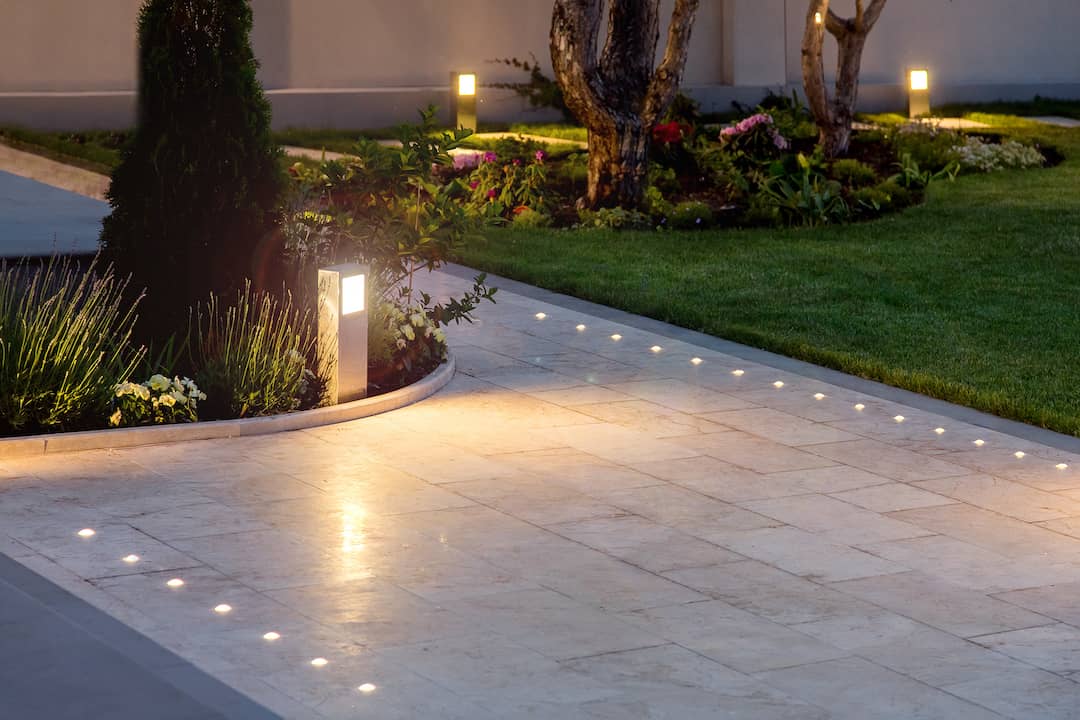
Best Landscaping Lighting
In order to determine the best landscaping lighting for you, it’s important to think about how you use the space. Not all landscapes are created equal, and each landscape will have different uses and requirements. Most outdoor lighting will be low-voltage because it’s safe to work with and not as expensive. Most outdoor landscape lighting systems will include a transformer, cables, stakes, fixture housings, and bulbs.
- Transformer: Reduces the voltage from your home to usable and safer voltage for outdoor use
- Cables: Carries the light from the transformer to the individual fixtures
- Stakes: Hold the fixtures in place
- Fixture Housings: The outer casings of the bulb shape and direct the light and protect the bulbs from the harsh outside elements
- Bulb: These determine the brightness and beam color
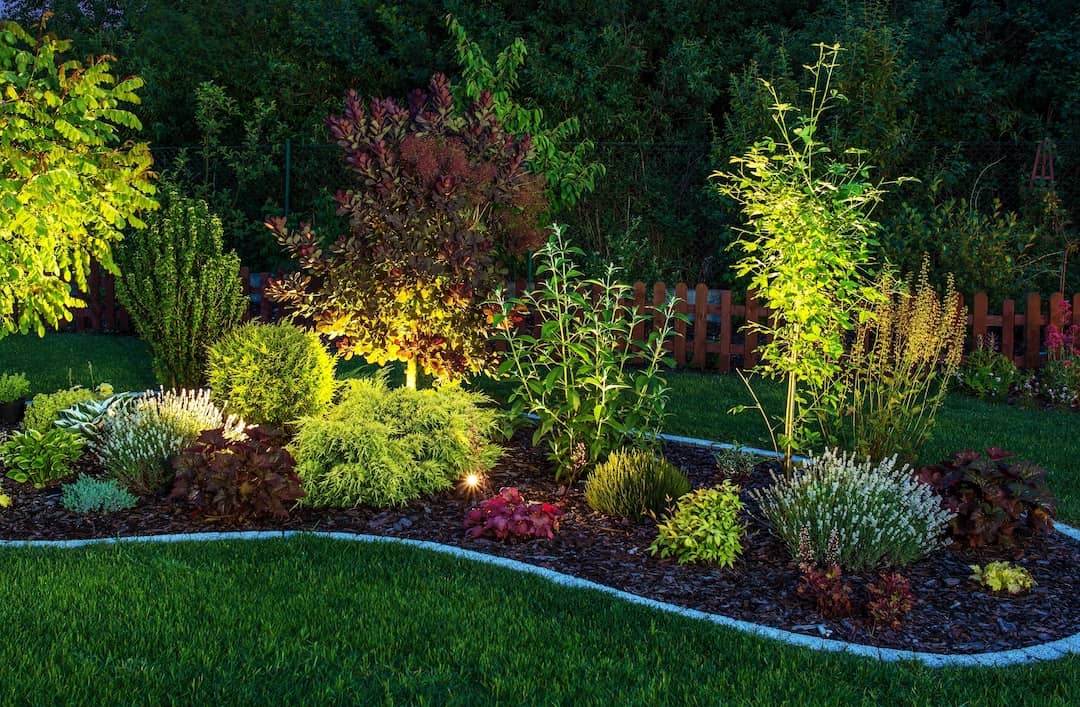
Landscape Lighting Areas
- Pathways: Important for safety but also can highlight the hardscape materials chosen in the landscape design.
- Patios: Dining, kitchen, and other outdoor living areas require a soft light so as to not blind the people enjoying the space. Some tree mounted downlighting that is diffused can have a moonlit effect which works great if you are looking for patio lighting ideas.
- Trees: Depending on the size of the trees, a few up-lights can really enhance the drama of these large shrubs and trees. Uplighting and cross lighting can create shadows that play on the surrounding features.
- Water Features: Landscaping lighting water elements has a striking impact because water glows differently than anything else in the landscape.
- Architectural Elements: Stonework and lighting architectural details can allow the home to be a beacon at night.
- Driveways: Not always needed due to car headlights but can dramatically increase the journey to the home if the driveway is especially long. Other options here are lighting the trees and landscape features adjacent to the driveway.
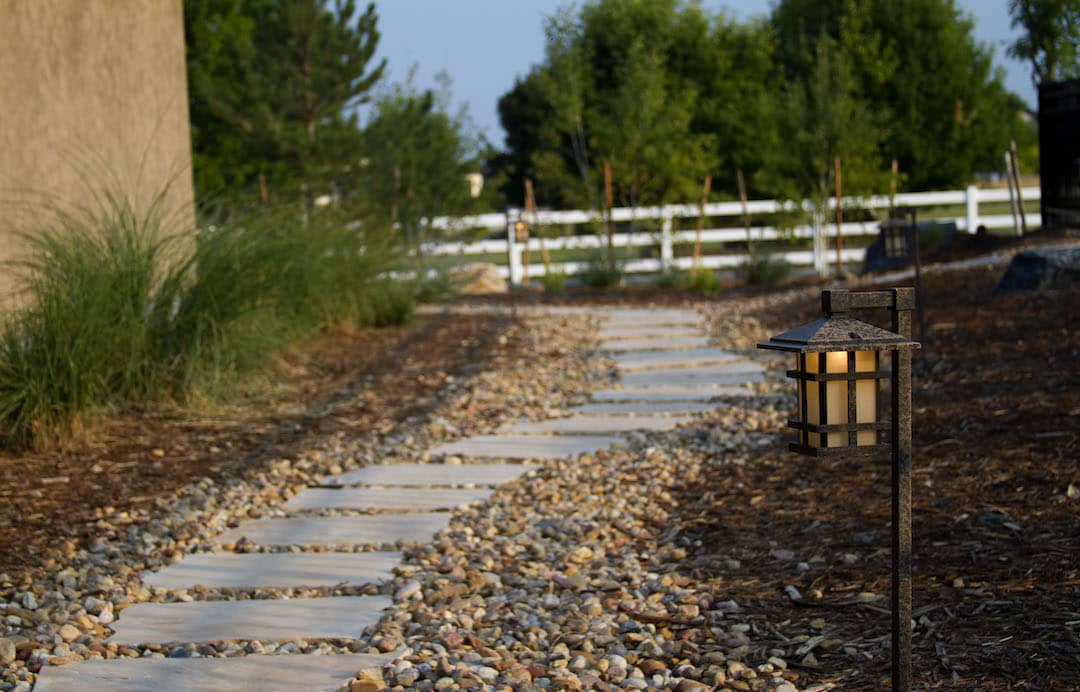
Types of Landscape Lighting Fixtures
- Spotlights: These are directional lighting fixtures that can be used in a variety of different ways. They are also known as uplights, downlights and flood lights. The most popular usage of these are to up-light trees and shrubs.
- Path and Area Lights: Used to aim the light beam down, these lights can be stationed along a pathway to illuminate the way. Area lights are also aimed down to encompass an entire area of a landscape, like a whole planting bed for example. If you are looking for garden lighting ideas, this could work to light up your garden beds.
- Flood lights: These are most commonly used to increase security. These lights are similar to spotlights but have a higher wattage and wider angle, really capturing a large space. Wall wash lights are a type of flood light that are used to illuminate across a large surface. The goal for well wash lights is to illuminate the entire surface and not leave an oval shaped beam in one area. These are typically used on the exterior of a home or for architectural highlighting.
- String Lights: Mostly decorative, having string lights or bistro lighting can really enhance the ambiance of a particular space. Strung from trees, decks, or posts, they can be hung anywhere and are easily customizable. They are also a great low-budget option.
- Bollard Lights: Typically, 30-36” tall, these cylindrical tube-shaped lights are best for driveways. Because they are a suitable height for cars and are more substantial than path lights, these work the best.
- Step Lights: Step lights are generally mounted to the risers of steps, with the light beam illuminating each step in a row. These are great for safety.
- Fountain Lighting: Many water feature light fixtures are actually under water and really add to the magic of the feature. Otherwise, the fountain could also be lit with external spotlighting.
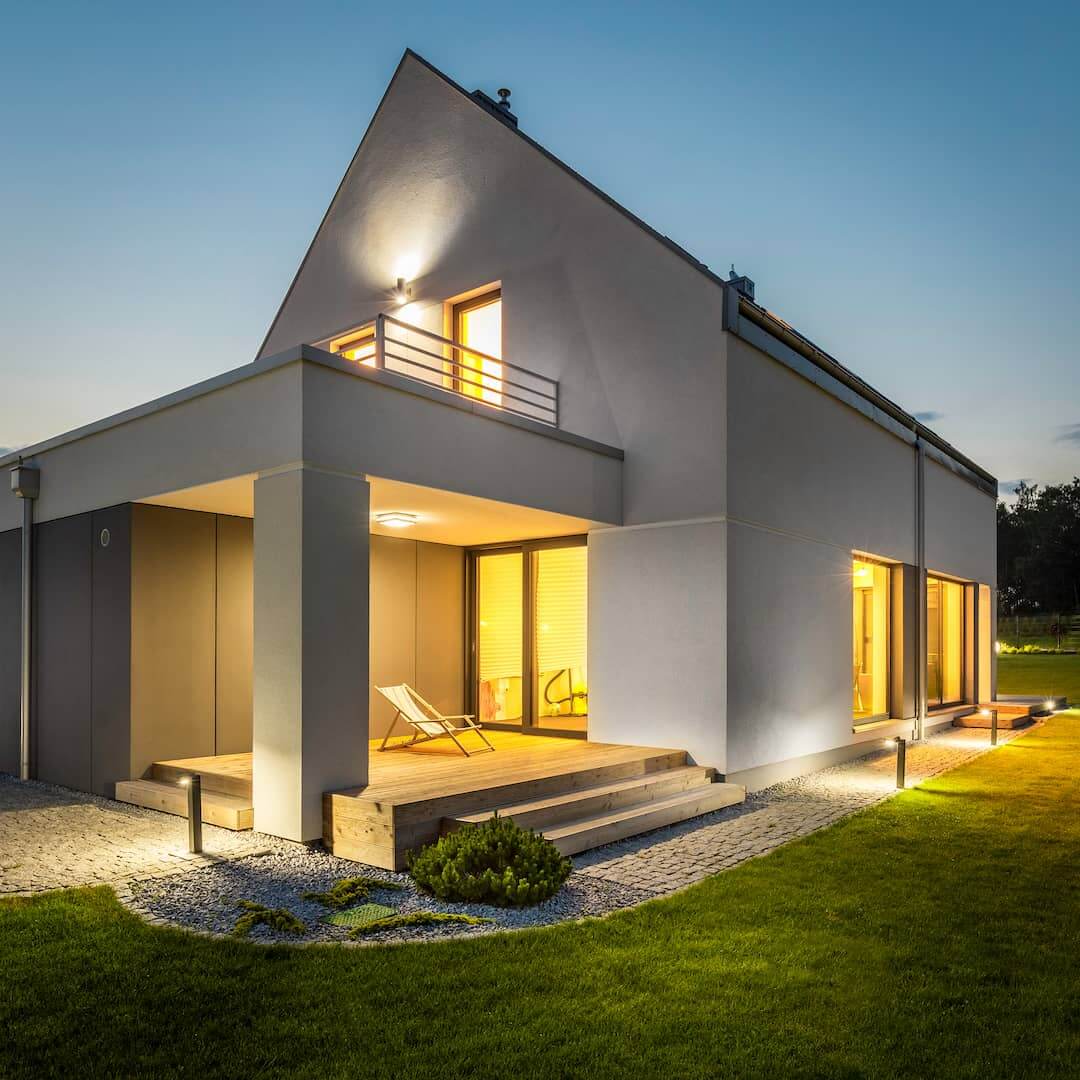
Lighting Innovation
Energy-efficient lighting has come a long way. There are so many outdoor lighting options when it comes to energy-efficient lighting. LED Solar landscape lighting uses solar cells and batteries and come in a variety of different types of fixtures. The best part about using solar yard lights is there is often no electric wiring necessary, making this a very DIY friendly option! Timers are another great way to be energy-efficient with your lighting. Using a photocell for your bistro lighting will turn them on when it gets dark and then off again when the sun comes up. If you want to be even more precise, having a timer set to a specific window is a great way to save energy. For more information on energy-efficient lighting, click here!
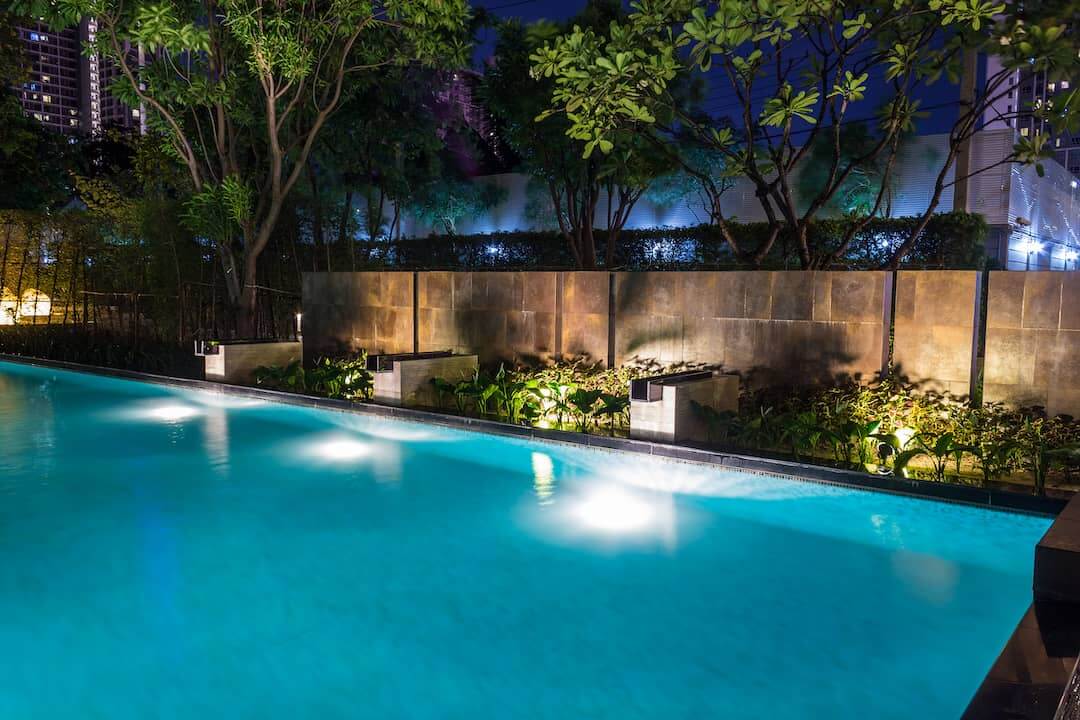
Landscape Lighting Techniques
If you are looking for some good backyard lighting ideas, these are the most popular lighting techniques in the landscape.
- Uplighting: This landscape lighting technique uses fixtures that light a tree from the ground and upwards, showing off the trunk and the foliage structure at the base. This technique can also be used to light up fences, statues, flags, structures, and other plantings.
- Moonlighting: To create this technique, fixtures are placed high up above structures or in between tree foliage facing downward so that the space is illuminated with interesting shadows from above.
- Silhouetting: To create a silhouette, light is placed behind planting materials with a soft light. This is great for plantings with a defined leaf structure or growth habit. The wide band of clean light will have the plantings in front of it in black.
- Shadowing: The opposite of silhouetting, shadowing has light fixtures placed directly in front of a tree or statue so that the surface behind has dramatic shadows. This can be an intriguing technique when there are many layers and textures in the space.
- Path lighting: Placing many path lighting fixtures close to the ground helps keep walkers safe and navigation easy. The purpose of this technique is to illuminate any possible obstacles so that they are easy to maneuver at night.
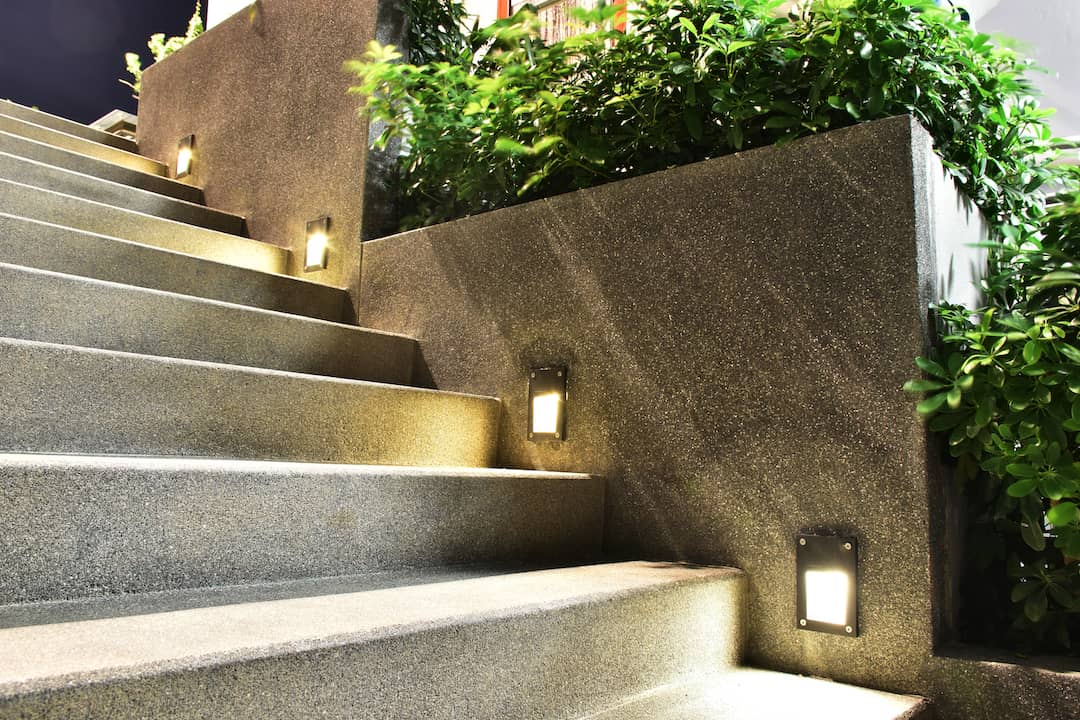
How to Design Landscape Lighting
1. Deciding the Purpose
In this step, it’s important to think about the space and the function. Determine which areas are particularly dark and which areas you want to visually highlight once the sun goes down. Make note of any pathways or obstacles that could be a safety hazard in the dark.
2. Ideas for Your Layout
Ideas for your layout. Inspirational images are crucial to the design process. Gather some landscape lighting ideas from other landscapes that you like and some spaces that are similar to your own.
3. Determine the Effort
Determine the effort. Depending on the number of fixtures and the complexity of the space, it’s important to determine how difficult the lighting design will be. During this step, consulting a lighting professional would be a good idea.
4. Setting a Budget
Make sure to set a budget for your project so you can determine what kind of fixtures you are able to choose from.
5. Landscape Lighting Design
Draw out the landscape starting with the perimeter and the buildings as you work inward. This will help you choose what kind of system you need for your lighting.
6. Selecting Fixtures
Make sure to choose fixtures with the correct voltage. Also consider choosing solar LED fixtures.
7. Wire Runs, Power Supplies, & Final Layout
If you chose to do a low-voltage lighting system, there will be many runs from one transformer. Your entire lighting system can operate from just one source, so in this step you are going to map out exactly where the fixtures will go, and the cables needed to extend from the transformer.
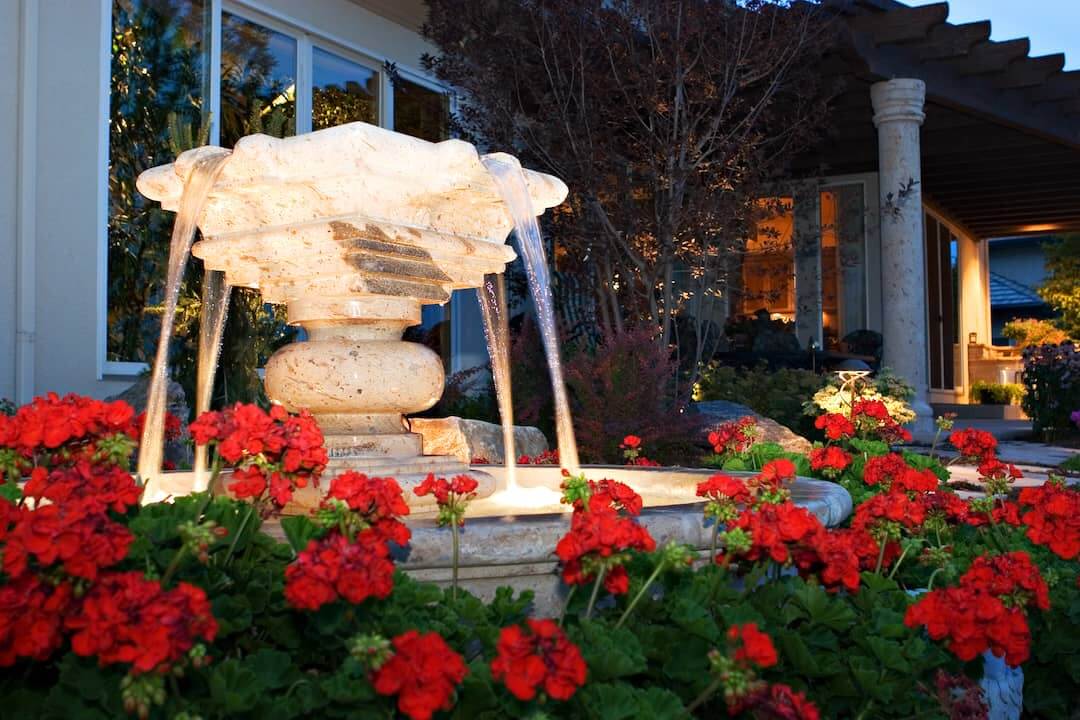
Installation Process
- Assemble Fixtures: Make sure everything is all put together and each piece is ready to be installed.
- Lay out lights: Next, lay out each fixture where you plan to install them.
- Mounting Transformer Box: The box plugs into the 120-volt outlet converting home electricity to the correct current for low voltage landscape lighting.
- Lay Out Wiring: Lay out the wiring needed from fixture to fixture.
- Scope out Runs: Here is the step to plan how many lights will run off each set of wires.
- Testing: Before installing everything, test each connection and each bulb.
- Aim the Lights: In the evening, go and turn all the lighting on to make sure they will be placed exactly where you want them.
- Bury Wire: Lastly, burying the wires only 2-6 inches deep so that it’s out of the way and won’t get damaged.
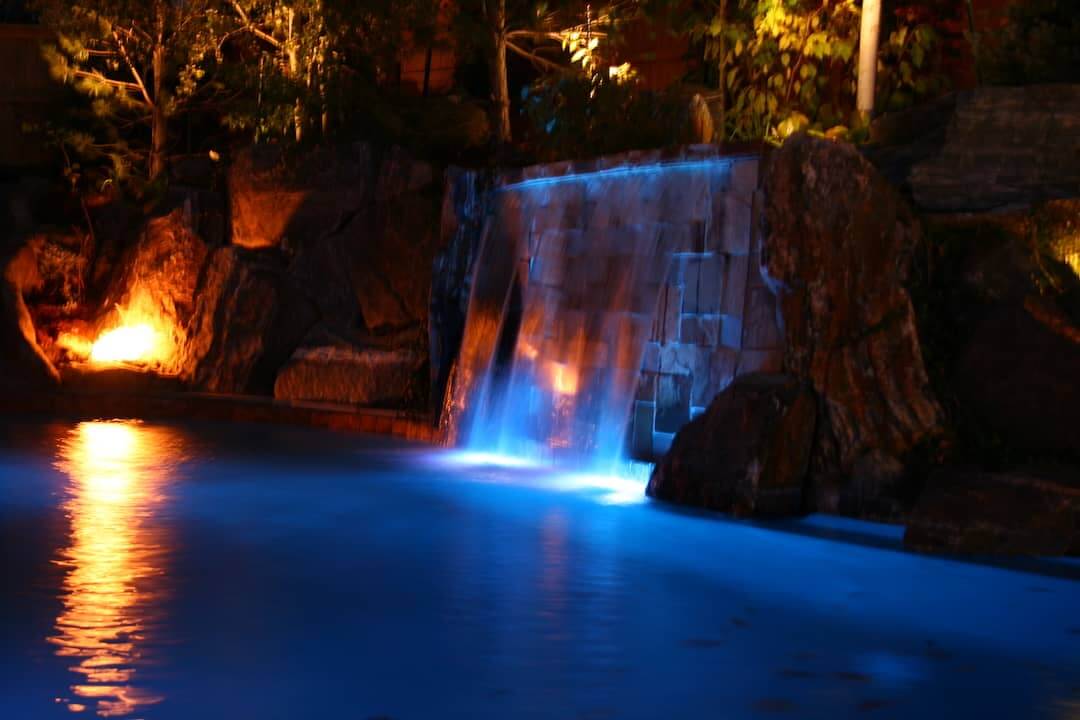
Landscape Lighting FAQs
- How far apart should landscape lights be?
The general rule of thumb for path lights is to place them 6 feet apart for the best coverage. If you are trying to up-light one tree, generally you only need one up-light if a tree is smaller and only 2 if the tree is mature in size.
- What is the best color for landscape lighting?
At Environmental Designs, we typically use 270 Kelvin which is a softer yellow light. This works well for landscape purposes because it’s not too bright and not too warm of a yellow.
- What is a good wattage for outdoor lights?
These vary depending on the fixture and can be anywhere between 3-12 watts.
- Do LED landscape lights need a special transformer?
Low and high voltage landscape lighting requires different transformers.
- How do you hide wires from landscape lighting?
The best way to hide the wires is to bury them. If there is a difficult area to bury under like a sidewalk, it’s best to call a professional to assist you.
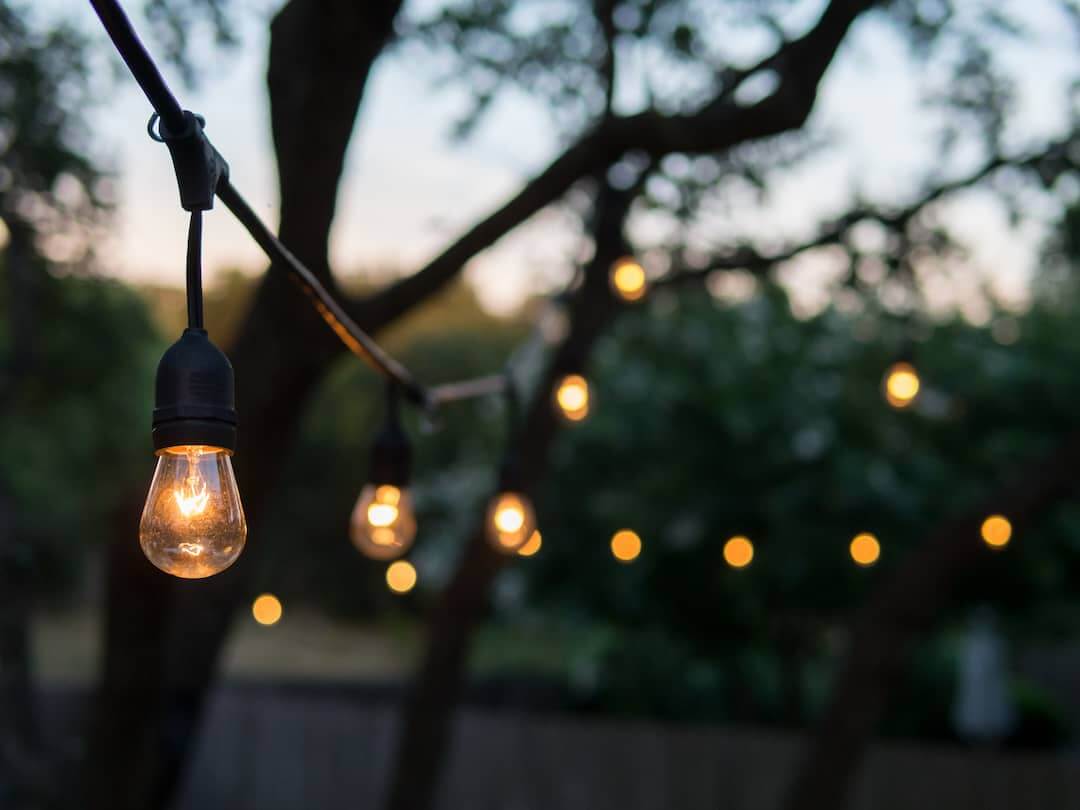
Need help from Landscape Professionals?
There are a lot of moving parts to designing and installing an outdoor lighting system. To make sure that the system is installed and designed correctly, give us a call! We can help discuss your options and come up with some outdoor landscape lighting ideas that are perfect for your space, hassle free.

